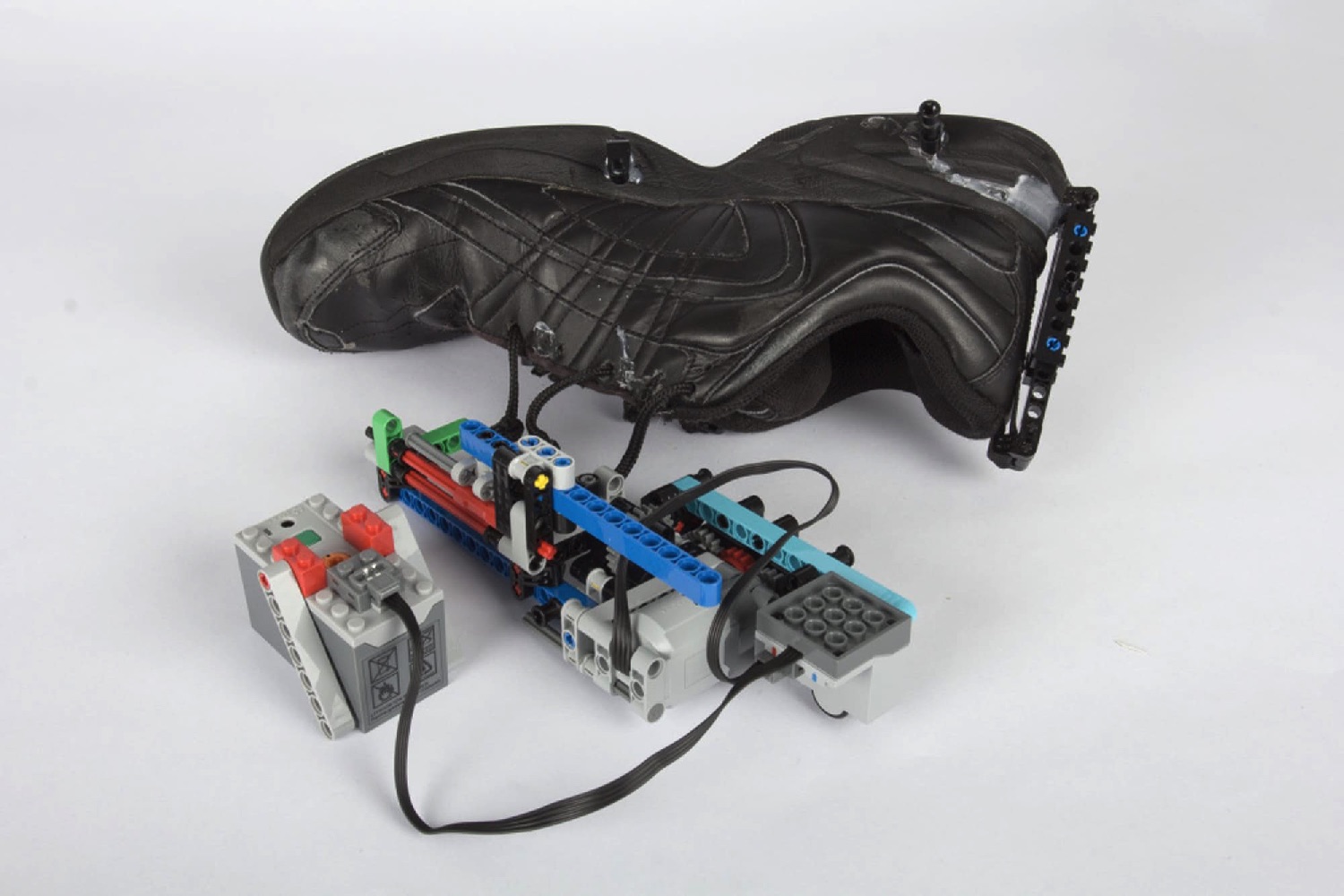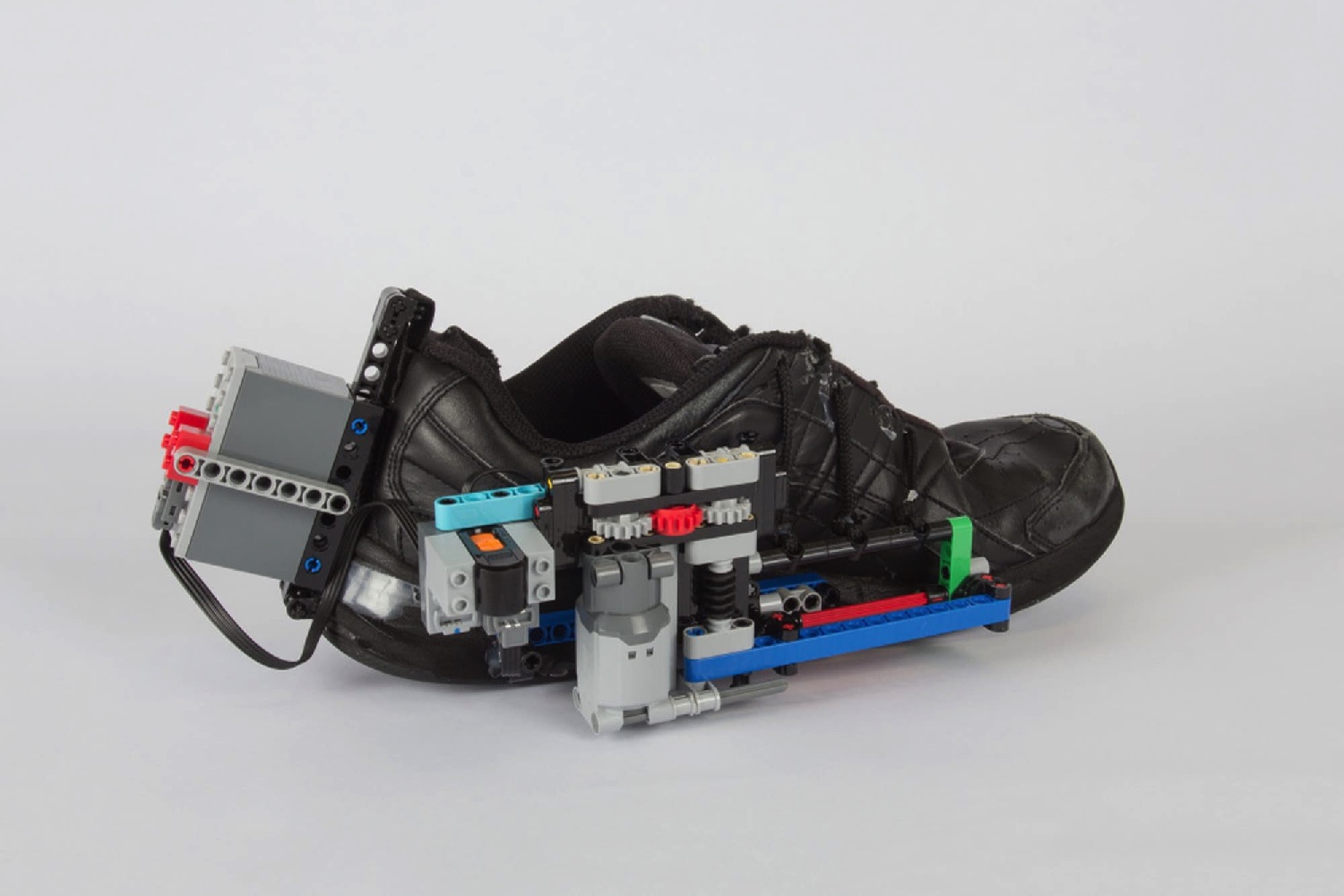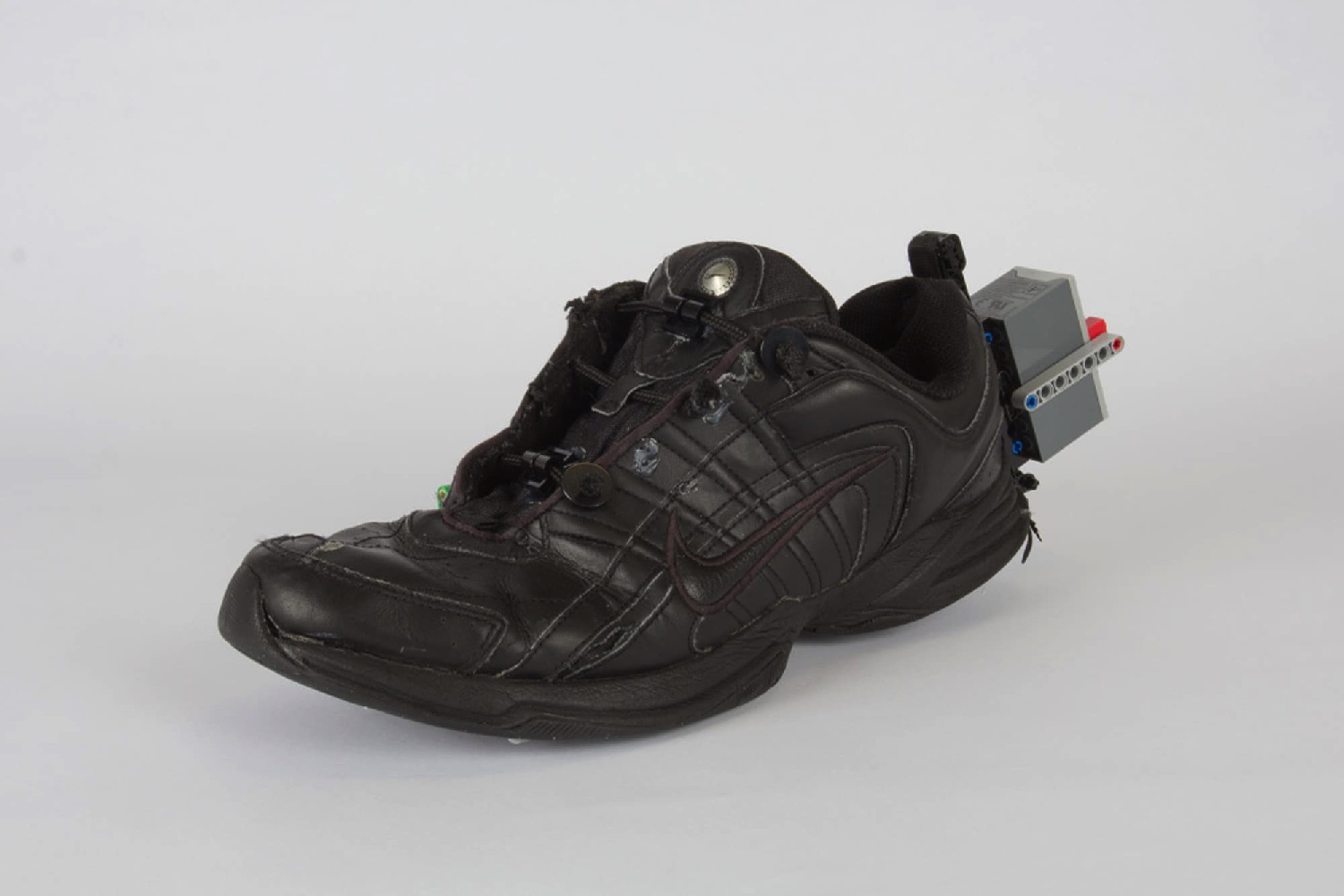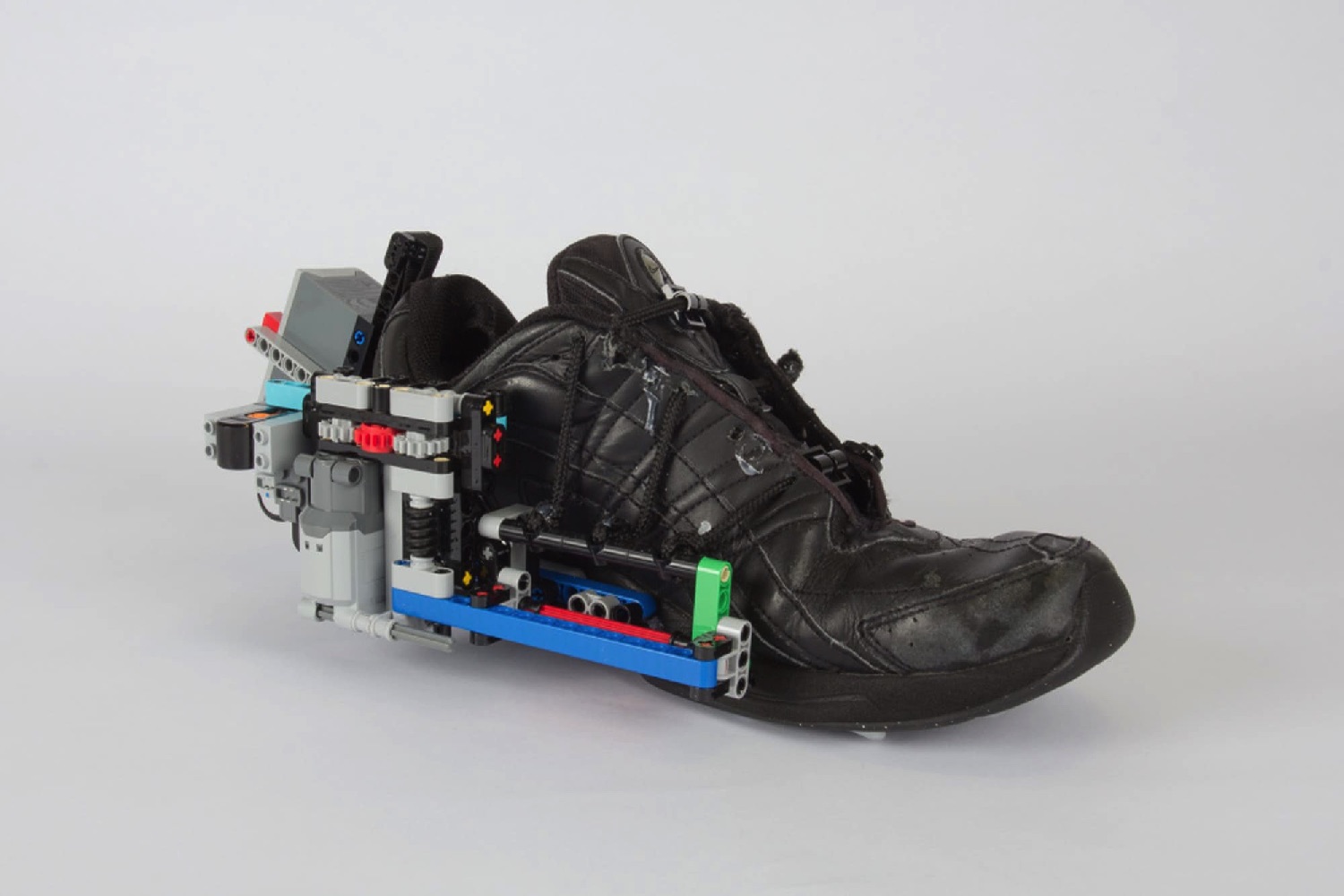Since that movie was made, we’ve had a few real-life tributes to self-lacing shoes from giant companies like Nike. However, industrial designer Vimal Patel has come up with his own, low-fi take on Marty McFly’s iconic footwear — and it just so happens to be made out of Lego.
“It is just what it says on the tin: a self-lacing shoe hacked together with glue and bricks,” Patel told Digital Trends. “It uses standard Lego Power Functions components — remote, receiver, battery box, and motor — to wind and unwind shoelaces.”
Patel said that he built the shoe for fun as a way of exploring practical uses for Lego, combined with other materials. The Lego mechanism itself is attached to the shoe laces at the side. When Patel turns on the power at the battery box, the winding axle cranks into gear and tightens the laces for him.
Being made of Lego, of course, don’t expect to go tramping around the city while wearing these (or, indeed, whipping around Hill Valley avoiding goons), but it’s certainly a fun hack. It was also as Patel put it, a chance to, “bring some life into a worn-out shoe that I would have otherwise thrown out.”
If you want to get hold of your own pair, you’ll have to show a bit of ingenuity, though.
“I don’t have plans to make more of these or sell them — like I said, it was purely for fun,” Patel continued. “I think the best thing your readers can do is to try making their own. The shoe only has three permanent Lego connection points, so those three parts are all I had to ‘lose’ with this experiment.”
All you need then are to find some old shoes headed for the trash, and you’re ready to go!







